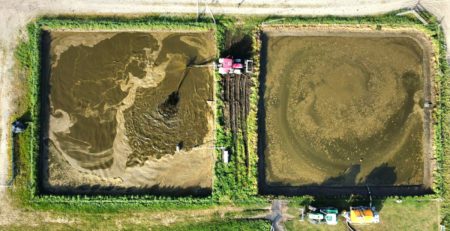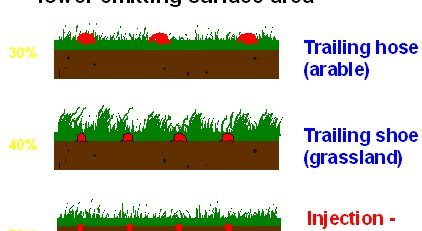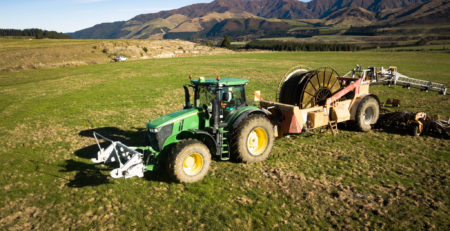Effective Management of Dairy Effluent.
The method of slurry application can impact on the amount of nutrients that are available to the crop. Minimising environmental losses.
Application of slurry
Applying slurry properly and at the right time will minimise environmental losses, ensuring that the crop receives the proper amount of nutrients, and make more nitrogen available for uptake by grass and crops.
Slurry has traditionally been sprayed to fields using a broadcast spreader, in which the slurry is driven through a nozzle under pressure. Up to 80% of the available N applied in the slurry by this technique of application may escape into the atmosphere as ammonia. Not only does this lead to the loss of an important nutrient, but it also pollutes the atmosphere.
Approximately 30% of the total ammonia loss after surface spreading occurs in the first hour and 80% in the first 12 hours. Reduce the surface area of the distributed slurry that is exposed to the air as a fundamental strategy to minimise such losses (thus minimising the area for ammonia to be lost from).
There are slurry spreading techniques that reduce the amount of the dispersed slurry that is exposed to the air, hence reducing ammonia losses. The most effective way to disperse this slurry is through slurry injection.
General benefits of the CIA slurry injection system.
- Reduced odour and public nuisance
- Reduced fertiliser inputs
- The ability to apply to growing cereal crops
- Reduced crop contamination and scorch
- Uniform spread patterns
- Increased overall farm fertility
Choose the Slurry Injection system from Central Injection Agri.
As the capital cost of purchasing these machines is very expensive, a cost effective alternative is to use your local contractor – CIA Ltd that has the equipment already available.
Application methods for slurry
Why would you choose slurry injection above the traditional alternatives?
A recent report looking at resource management on farms revealed that 75% of the farmers who took part in the survey always apply manure with a conventional muck or slurry spreader, with only 4% using a slurry injector or trailing shoe. It is important to weigh up which method will be the most efficient all round.
Splash Plate
The most popular method of applying slurry, the splash plate, can cause up to 80% of the available N to be applied in the slurry to be lost to the atmosphere as ammonium.
Band Spreaders
A boom with numerous uniformly spaced flexible pipes is positioned behind the tractor or tanker. These pipelines carry slurry, which is then deposited on the soil or crop surface.These are straightforward systems with minimal moving elements that make it simple to disseminate big amounts of slurry.
Band spreaders don’t necessarily place the slurry on the soil surface which means that growing crops and grass could be contaminated or scorched by slurry. This is less of a problem with young growing crops where slurry is largely deposited on bare soil.
Because there is no contact with the soil there are no requirements for extra power or fuel to apply the slurry.
Shallow injection
In order to deposit slurry, several discs create slots in the soil’s surface. While injecting the slurry directly into the rooting zone, this procedure causes very minimal soil disturbance and makes it easily accessible to the roots of the developing crop.
Shallow injection of slurry into the soil can lower ammonia emissions by up to 73%.
If you need to disperse near residences, shallow injection methods will also help to limit grass contamination and odour levels.
The discs can aid in soil aeration, promoting beneficial microbial activity.









